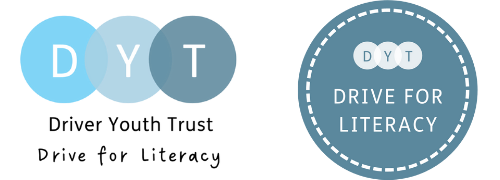
Is ‘catch-up’ enough for learning needs that have always been there?
19/10/2020
Back when I was a SENCo, I was always concerned about the long summer break and getting learners back into the swing of school and its demands. Now, following months of school closures, I imagine this is a mammoth worry for many teachers and SENCos working in schools today. For a learner with SEND, limited ‘catch-up’ may not make up for such a long break from formal education, which can set them back for several reasons.
Children falling behind has been an issue for many schools for years. Now, with additional government funding, schools have an opportunity to address it. If, however, this funding is spent on filling the gaps in knowledge for exams or limited to certain skills within a subject then we are in danger of missing the bigger picture. This could be an opportunity to develop the literacy skills necessary for life, not just to get through the next round of assessments.
An environment of constant change
Teachers have been tireless in their work with learners throughout lockdown and many will have worked during the summer holidays to prepare for an unprecedented return to school. They are managing an environment of constant change.
As we settle in to the new normal, schools face the challenge of identifying who needs to ‘catch-up’ and what this catch-up may look like. This is a valuable opportunity to shift some of the thinking around assessment which is often outcome-based and put the learner at the centre. Identifying a child’s learning needs, whether it leads to a formal diagnosis of a specific difficulty or not, can often unlock greater understanding of how to support and engage them, and can lead to a better experience of education for that learner.
Schools also need to consider whether these learning difficulties are new or if they were persistent and clear before lockdown. If they were apparent before school closures, this might indicate an unidentified learning difficulty and need further investigation and support. Applying the graduated approach (assess, plan, do and review) here would add the structure needed.
A label may not tell the whole story
Having worked in SEND for my entire teaching career, I have come to terms with the fact that labels can often open doors to support and classification helps to meet some of the learner’s needs. However, securing a label is not the conclusion to a learner’s difficulties and sometimes it can prevent other learning difficulties from being addressed. For example, a class teacher may be aware of a learner’s dyslexia but not their social and emotional mental health which, right now, may need more attention than their literacy needs.
The SEND code of Practice highlights how important accurate and thorough identification is:
“Slow progress and low attainment do not necessarily mean that a child has SEN and should not be automatically lead to a pupil being recorded as having SEN. Equally, is should not be assumed that attainment in line with chronological age means that there is no learning difficulty or disability”
It is also crucial that we recognise that not all learners will have fallen behind – some may have excelled in one skill but need extra support with another. There cannot be a ‘one size fits all’ approach to this assessment as the last few months of lockdown have been different for all of us.
There will also be a handful of learners that have thrived with home-learning, developing their independence while being able to set their own pace for learning and choosing what routine works for them. The value of such insight cannot be underestimated, and schools would benefit from delving a bit deeper with all learners to understand their experience of lockdown. Our ‘Return to school: don’t miss the opportunity to learn from parents’ blog explores the value of the school-home relationship.
Understanding the impact of Covid
The Education Endowment Foundation is supporting three research projects into the impact on learning that Covid has had on schools in England, but the earliest results will not be available until next March. For many – such as the current year 11 cohort – this will be too late to address any missed learning or exposed needs.
It is therefore imperative that teachers don’t delay in reviewing their learners’ strengths and weaknesses. Collaborate with colleagues, share insights, and make use of resources. I would recommend using a template such as a one-page profile to collate the information and empower the learner to share their own perception of their learning ability.
The sooner you understand where your learners are, following lockdown, the sooner you can identify whether it’s ‘catch-up’ the child really needs, or if more focused support is required.
We’re here to help
Driver Youth Trust is here to support all teachers, schools and education professionals to get to grips with the current educational climate. Head to our website to find free resources, regular SEND policy updates, and high quality, topical professional development opportunities.
Kelly Challis
Consultant Teacher, DYT
Inspired by working at a special school, Kelly completed a specialist qualification in teaching learners with literacy difficulties. Since then, she has worked in Primary and Secondary mainstream as a teaching assistant, Further Education as a manager, and Higher Education as a specialist one-to-one teacher. She has been a SENDCo in two preparatory schools.

